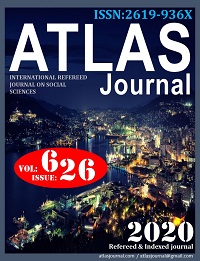İLMÎ / FENNÎ TEFSİR VE ÖRNEKLERİ
DOI:
https://doi.org/10.31568/atlas.409Anahtar Kelimeler:
Kur’ân Âyetleri, Müfessirler, İlmî TefsirÖzet
ÖZET Biz bu makalemizde, Kur’ân’ın ilmî gelişmeleri engellemediği, bilimsel keşif ve gelişmelerle çelişen hiçbir âyetin bulunmadığını, Kur’ân’da her türlü gelişmeyi teşvik edici âyetler olduğunu ifade eden İlmî/Fennî Tefsir ekolünün ne manaya geldiğini, tarihî seyir içersinde bu tefsir ekolünü kabul edenler ve ret edenler hakkında bilgi verip, ileri sürdükleri argümanlarından bahsettik. İlk devirdeki ilmî/fennî tefsir örnekleri ile son devirdeki ilmî/fennî tefsir örnekleri hakkında bilgi verirken, Gazzâlî, Fahruddin Râzî, Suyûtî, İskenderanî Tantâvî, v.b. gibi müfessirlerin ilmî tefsire bakışını bizzat eserlerinden örnekler vererek göstermeye çalıştık. Kur’ân’da kesinleşmiş bilimsel keşif ve gelişmelerle çelişen hiçbir âyet bulunmadığı gibi, din ile bilim arasında böyle bir çatışma da yoktur, aksine bir uyum bulunmaktadır. İlmî/fennî tefsir ekolünü savunan ve biraz da aşırı bir anlayışa sahip olanlara göre, Kur’ân’da bütün bilimler yer alır. Hattâ, 19. yüzyıldan itibaren batıda gelişen bilimler ile Kur’ân arasında bir çatışma olmadığı gibi, Kur’ân bazı bilimlere ve bilimsel buluşlara kaynaklık etmiştir, görüşündedirler. Müfessir Nursî, Kur’an’da teknik ve teknolojiye, yeni bilimsel bulgulara ve icatlara işaretler edildiği yönündeki görüşünü, peygamber mu’cizelerini ve kıssalarını yorumlarken ifade eder. Mu’cizelerin her birisi ilimlerin varacağı son noktalarına işaret ettiğini söyleyerek bu konuda ayetlere çok önemli bir bakış açısı getirmiştir.
İndir
Yayınlanmış
Nasıl Atıf Yapılır
Sayı
Bölüm
Lisans

Bu çalışma Creative Commons Attribution-NonCommercial 4.0 International License ile lisanslanmıştır.


